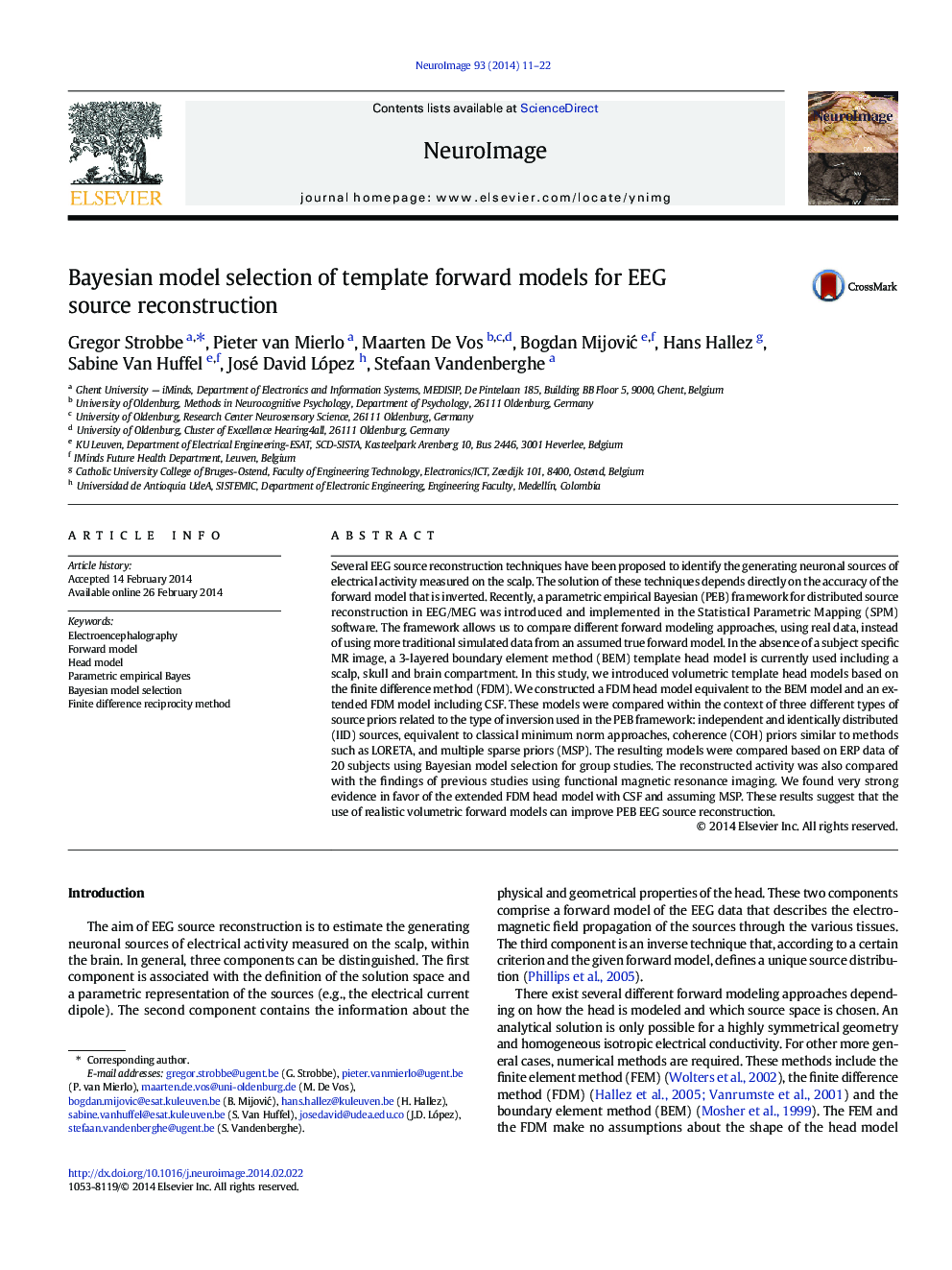| کد مقاله | کد نشریه | سال انتشار | مقاله انگلیسی | نسخه تمام متن |
|---|---|---|---|---|
| 3071939 | 1188688 | 2014 | 12 صفحه PDF | دانلود رایگان |

• We compared template forward models for EEG source analysis using real ERP data.
• Boundary element method and finite difference method based models were considered.
• A finite difference method template head model was constructed including CSF.
• The effect of using different source priors was investigated.
• We found very strong evidence in favor of the model including CSF and assuming MSP.
Several EEG source reconstruction techniques have been proposed to identify the generating neuronal sources of electrical activity measured on the scalp. The solution of these techniques depends directly on the accuracy of the forward model that is inverted. Recently, a parametric empirical Bayesian (PEB) framework for distributed source reconstruction in EEG/MEG was introduced and implemented in the Statistical Parametric Mapping (SPM) software. The framework allows us to compare different forward modeling approaches, using real data, instead of using more traditional simulated data from an assumed true forward model. In the absence of a subject specific MR image, a 3-layered boundary element method (BEM) template head model is currently used including a scalp, skull and brain compartment. In this study, we introduced volumetric template head models based on the finite difference method (FDM). We constructed a FDM head model equivalent to the BEM model and an extended FDM model including CSF. These models were compared within the context of three different types of source priors related to the type of inversion used in the PEB framework: independent and identically distributed (IID) sources, equivalent to classical minimum norm approaches, coherence (COH) priors similar to methods such as LORETA, and multiple sparse priors (MSP). The resulting models were compared based on ERP data of 20 subjects using Bayesian model selection for group studies. The reconstructed activity was also compared with the findings of previous studies using functional magnetic resonance imaging. We found very strong evidence in favor of the extended FDM head model with CSF and assuming MSP. These results suggest that the use of realistic volumetric forward models can improve PEB EEG source reconstruction.
Journal: NeuroImage - Volume 93, Part 1, June 2014, Pages 11–22